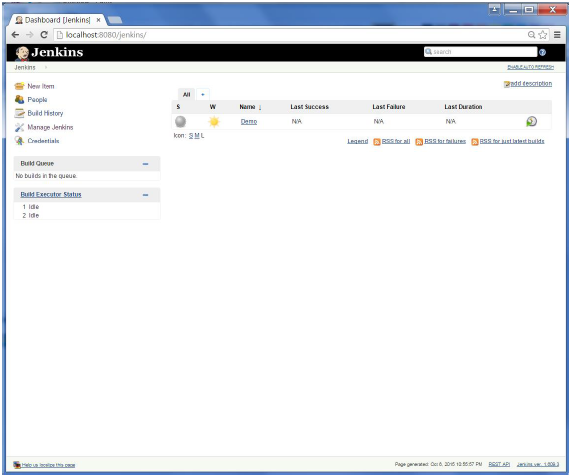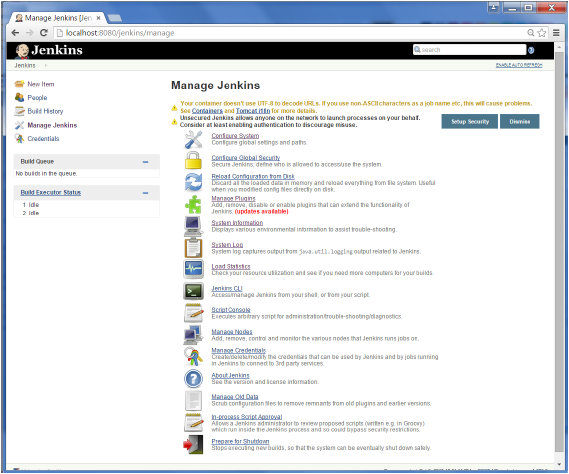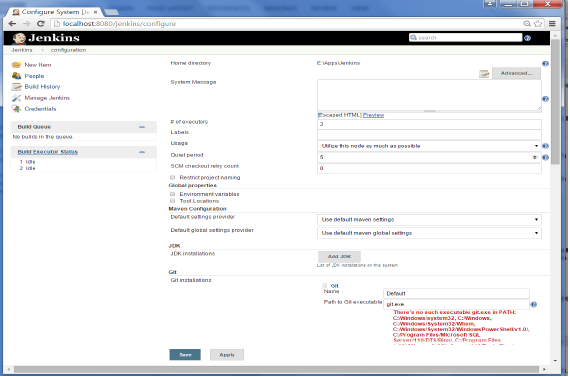Jenkins - Configuration
You probably would have seen a couple of times in the previous exercises wherein we had to configure options within Jenkins. The following shows the various configuration options in Jenkins.
So one can get the various configuration options for Jenkins by clicking the ‘Manage Jenkins’ option from the left hand menu side.

You will then be presented with the following screen −

Click on Configure system. Discussed below are some of the Jenkins configuration settings which can be carried out.
Jenkins Home Directory
Jenkins needs some disk space to perform builds and keep archives. One can check this location from the configuration screen of Jenkins. By default, this is set to ~/.jenkins, and this location will initially be stored within your user profile location. In a proper environment, you need to change this location to an adequate location to store all relevant builds and archives. Once can do this in the following ways
- Set "JENKINS_HOME" environment variable to the new home directory before launching the servlet container.
- Set "JENKINS_HOME" system property to the servlet container.
- Set JNDI environment entry "JENKINS_HOME" to the new directory.
The following example will use the first option of setting the "JENKINS_HOME" environment variable.
First create a new folder E:\Apps\Jenkins. Copy all the contents from the existing ~/.jenkins to this new directory.
Set the JENKINS_HOME environment variable to point to the base directory location where Java is installed on your machine. For example,
| OS | Output |
|---|---|
| Windows | Set Environmental variable JENKINS_HOME to you’re the location you desire. As an example you can set it to E:\Apps\Jenkins |
| Linux | export JENKINS_HOME =/usr/local/Jenkins or the location you desire. |
In the Jenkins dashboard, click Manage Jenkins from the left hand side menu. Then click on ‘Configure System’ from the right hand side.
In the Home directory, you will now see the new directory which has been configured.

# of executors
This refers to the total number of concurrent job executions that can take place on the Jenkins machine. This can be changed based on requirements. Sometimes the recommendation is to keep this number the same as the number of CPU on the machines for better performance.
Environment Variables
This is used to add custom environment variables which will apply to all the jobs. These are key-value pairs and can be accessed and used in Builds wherever required.
Jenkins URL
By default, the Jenkins URL points to localhost. If you have a domain name setup for your machine, set this to the domain name else overwrite localhost with IP of machine. This will help in setting up slaves and while sending out links using the email as you can directly access the Jenkins URL using the environment variable JENKINS_URL which can be accessed as ${JENKINS_URL}.
Email Notification
In the email Notification area, you can configure the SMTP settings for sending out emails. This is required for Jenkins to connect to the SMTP mail server and send out emails to the recipient list.
No comments:
Post a Comment